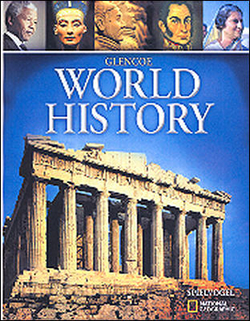Glencoe World History © 2010Chapter 30:
Africa and the Middle EastChapter OverviewsAfrican states gained independence after World War II, but faced many political, social, economic, and health challenges. The Middle East has been the site of much conflict. There has been recurring violence and continuing efforts at international mediation. Section 1 Independence in Africa
In the late 1950s and 1960s most African nations achieved independence. Meanwhile in South Africa the system of apartheid segregated society. The new African states and their leaders sought democratic governments for their countries. Many African leaders advocated Western-style capitalism. Others called for an African form of socialism. Pan-Africanism was also a popular political creed, although African unity never became a political reality. Indeed, bloody wars between competing ethnic groups have been common. Economic challenges have included the need to import technology and manufactured goods from the West. Rapid population growth, poverty, and drought have caused starvation and migration. AIDS has become widespread. Despite attempts at democracy, one-party states and corrupt military regimes have been more typical. However, protest has brought some democratic change. The struggle to end apartheid resulted in the election of anti-apartheid leader Nelson Mandela as president of South Africa. Pockets of Western culture in Africa's cities contrast with the traditional life in rural areas. Tension between traditional and modern practices has been a dilemma for many Africans and is reflected in African art and literature. Section 2 Conflict in the Middle East
A 1947 United Nations resolution proposed that the Palestine mandate be divided into a Jewish state and an Arab state. The Arabs rejected the plan. The Jews founded the state of Israel in 1948. During the 1950s, Gamal Abdel Nasser became the leader of the Pan-Arab movement. Nasser's confrontation with Israel led to the Six-Day War, in which Israel gained large amounts of territory. During the 1973 Arab-Israeli War, oil price hikes led to economic problems in Europe and the United States. The intifada, a Palestinian uprising, was followed by negotiations on Palestinian autonomy. In the 1993 Oslo Peace Accords Israel and the PLO agreed that the PLO would control a semi–independent area and that the PLO would recognize Israel. A second intifada started in 2000. In 2006 a conflict between Hezbollah forces and the Israeli military occurred in Lebanon. A revolution in Iran ended American ties with a close ally and led to an Islamic republic ruled by Islamic law. Iraqi President Saddam Hussein invaded Kuwait but was forced to withdraw after an American-led force organized to free Kuwait. In Afghanistan, the Taliban was overthrown when U.S.-led troops invaded to destroy al-Qaeda forces in response to the attacks of September 11, 2001. In March 2003 a largely U.S.–led army invaded Iraq and removed Saddam Hussein from power. Conservative Muslims have increasingly enforced strict Islamic behavior in the Middle East.  | 
















